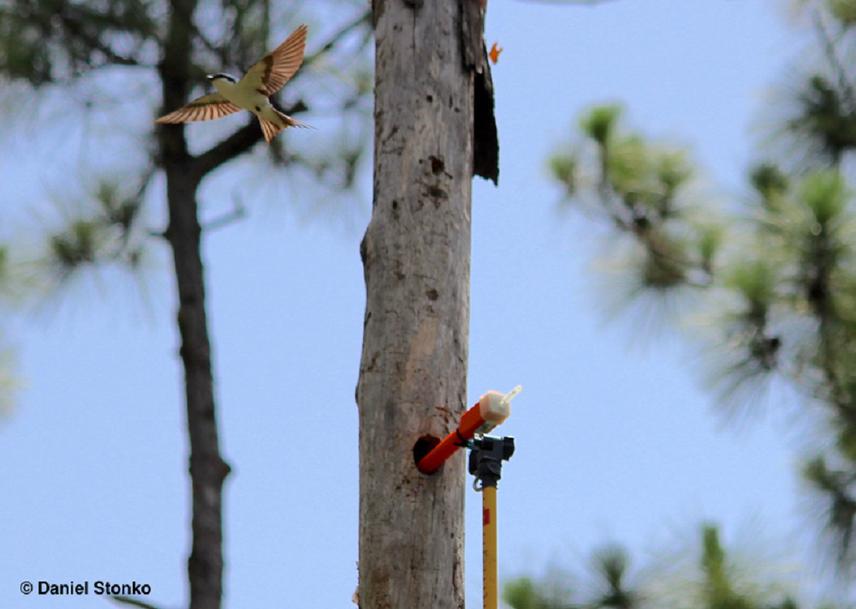Maya Wilson
Other projects
1 May 2014
The Ecology, Life History and Conservation of the Bahama Swallow (Tachycineta cyaneoviridis), an Endangered Passerine in the Northern Bahamas
29 Mar 2016
Population Biology, Life History and Ecology of the Bahama Swallow (Tachycineta cyaneoviridis): Informing Conservation of an Endangered Bird in the Bahamas I
Bahama Swallow (Tachycineta cyaneoviridis), a poorly understood and endangered bird species that breeds on only three islands in the northern Bahamas. In collaboration with several organizations, I will inform and engage local communities, and apply the information produced from this project to the development of effective strategies to conserve the species and its habitat.

Adult Bahama Swallow in nest. ©Daniel Stonko.
(1) What is the current status of Bahama Swallow populations?
Available population estimates indicate a sharp decline in population abundance since the 1970s, but there have been no official surveys conducted since 1995, and the current estimate of 1500–4000 individuals is anecdotal. I will estimate current population abundance and density in the northern Bahamas using various survey techniques. I will also estimate population structure using genetic methods to provide insight into the movement of Bahama Swallows within their range.
(2) What are the life history characteristics of the Bahama Swallow?
The Bahama Swallow is an obligate secondary cavity nester that builds nests in cavities in snags of Caribbean Pine (Pinus caribaea) and a variety of other structures. I will expand upon the limited breeding biology data (Allen 1996) by studying breeding Bahama Swallows during consecutive breeding seasons. Nest monitoring will also provide estimates of nest depredation rates.
(3) Are cavity-nesting resources limited on the pine islands?
Bahamian pine forests were heavily logged through the early 1970s and it appears that regeneration has resulted in tracts of similarly aged secondary growth. I will assess the pine forest and other habitat types on the pine islands to identify and determine the extent of suitable Bahama Swallow breeding habitat and the dangers posed to this habitat.
The Hairy Woodpecker (Picoides villosus) and the West Indian Woodpecker (Melanerpes superciliaris) are the only species that create cavities in the northern Bahamas, and thus are essential to BAHS. However, it is likely that these woodpeckers, along with La Sagra’s Flycatcher (Myiarchus sagrae) and the American Kestrel (Falco sparverius) compete with BAHS for suitable nesting cavities. When nesting in artificial cavities in and near human settlements, BAHS may also face competition with the invasive House Sparrow (Passer domesticus) and European Starling (Sturnus vulgaris). I will assess how cavity resources vary in the northern Bahamas, and the position of the Bahama Swallow within the cavity-nesting community.
I am working with several organizations in The Bahamas, especially the Bahamas National Trust (BNT), to facilitate and promote this work. My goal is to engage communities in this project and the science being conducted locally. Ultimately, I hope to assist in the development of strategies to conserve the Bahama Swallow and its breeding habitat.